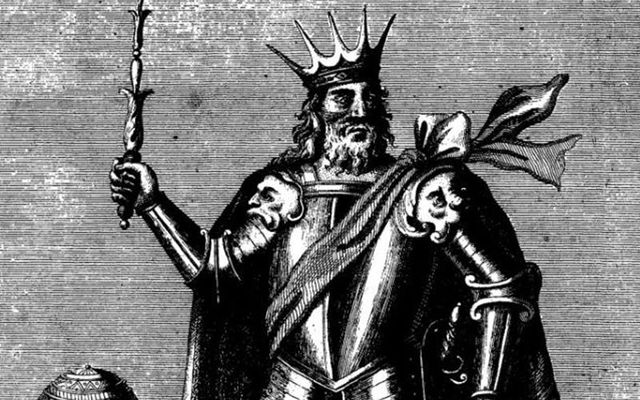A County Clare politician has proposed the formation of a "mini-Indiana Jones" team to search for the long-lost artifact of Brian Boru the last High King of Ireland.
Despite experts being unable to confirm the location of Brian Boru's crown many believe that the ancient artifact has been housed in the Vatican, in Rome, for millennia. Now the County Clare politician, Cathal Crowe is proposing that a group be formed to attempt to find this crown which has become the subject of legend.
Speaking to Newstalk Radio, Crowe said he had been approached by the "bloodline descendants of Brian Boru” who believe the crown exists.
Crowe said “The belief is that Donnchadh O'Brien (son of Brian), who lived in Rome towards the end of his life, donated the high king crown of Ireland to Pope Alexander II in the year 1064...
“It’s unconfirmed, but the family is adamant that this happened; it’s been passed down in the lore of their family for many centuries, not just generations, and they’re asking that the crown be returned.”
The Fianna Fáil TD has engaged with stakeholders in an attempt to locate the crown.
“I've asked the Minister of Foreign Affairs that he might look and we have lots of expertise in Ireland, academics, the National Museum staff, the OPW [Office of Public Works], and diplomatic staff in Rome," he said.
"I've asked that they might set up a mini task force, a mini-Indiana Jones team, if you like, to establish: does this exist? Is it somewhere over there? And if it is there, let's bring it back to Ireland.
“It's iconic and represents something very special about the statehood here in this country.”
Brian Boru was a significant figure in Irish history, known for being a High King of Ireland in the early 11th century. He was born around 941 AD and became the King of Munster before rising to the position of High King.
Brian Boru is celebrated for his efforts to unify Ireland, which was then fragmented into various kingdoms. His most notable achievement was leading the Irish forces to victory at the Battle of Clontarf in 1014, which significantly weakened Viking influence in Ireland. Brian Boru's legacy endures as a symbol of Irish unity and resistance against foreign invaders.

Love Irish history? Share your favorite stories with other history buffs in the IrishCentral History Facebook group.
Speaking to Newstalk, Crowe also said Irish historic artifacts should be put on display for the public and not left in storage.
“A lot of our precious items are held by the British Museum and, as a historian, I’d have no problem with those artifacts being in Britain as long as they’re on display to the public and you can see them,” he said.
“But I have a huge problem with artifacts that are Irish of origin lying in archive boxes, cardboard archive boxes in warehouses when they could very well be on display here in Ireland, be it in our national museums or some of our county or regional museums.”
He added that if Brian Boru's crown does exist "it does exist it belongs somewhere like Dublin Castle or Trinity College, somewhere central where it can be viewed by the public...
“Sometimes these things unearth themselves when you least expect; this one could be sitting on a shelf in the Vatican, or maybe it’s just mythical.
“But either way I don’t think it’s an onerous task to delve into it a little bit.”
Previously, when Crowe asked Ireland's Tanaiste (Deputy Head of State) and Minister of Foreign Affairs, Michéal Martin, to use his diplomatic position to aid in finding the artifact.
The Irish Examiner reported that Martin responded by saying “The current circumstances, or existence, of the crown of Brian Boru are unconfirmed, and a question of some dispute among historical experts.
However, he said he would liaise with the relevant authorities to review the location of the crown.
Medieval Irish history professor at Trinity College Dublin, Seán Duffy, also questions its existence believing it could be a metaphor for the Vatican's rule over Ireland.
Prof. Duffy told the Examiner “There was a belief in the Middle Ages that all islands belonged to the papacy. The pope could therefore give an island away,”
The professor explained that before the Anglo-Norman invasion of Ireland, King Henry II was permitted by Pope Adrian IV to invade Ireland and become its leader.
“As a result, Ireland became an English colony and Henry then wrote off to the pope, requesting that he grant a crown so that his son John, the future King John, could be crowned king of Ireland.
“The belief continued that if the papacy had granted the kingdom of Ireland to England, then the papacy could also withdraw that grant, and metaphorically hand the 'crown' of Ireland to another.
Prof. Duffy said that from his own research, he had found no belief that the Vatican holds a physical crown linked to Boru.




Comments